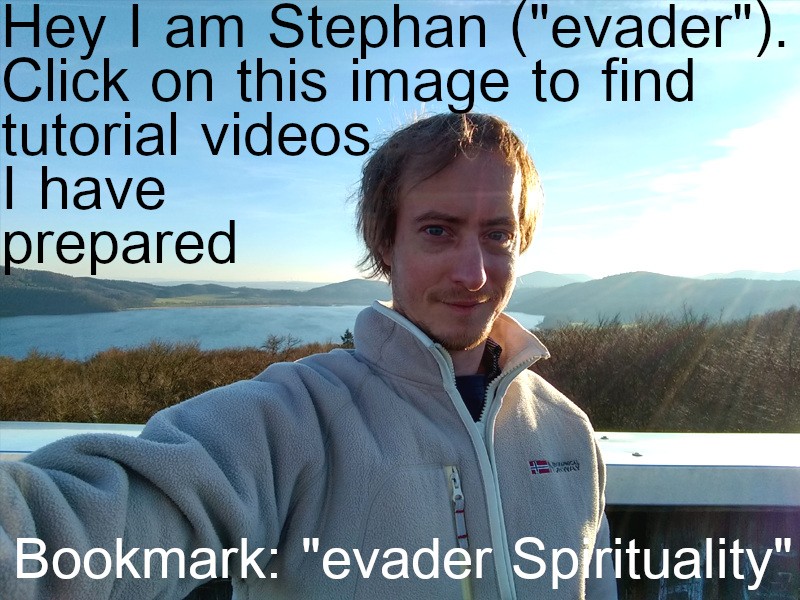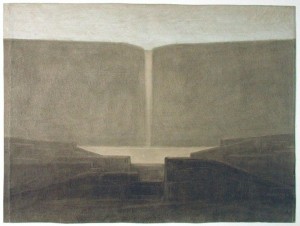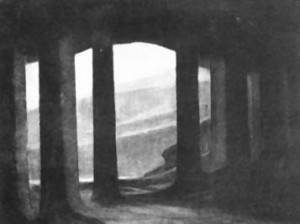Postmodern movie, theater or film theories part 4. Adolphe Appia, stage and proxemics. Wagners total work of art (Gesamtkunstwerk). And creating meaning other then word logic
If we want to understand modern movies we have to look at the past of theater making with this article now. If you read all 4 articles above starting with Film Theories you will win a major understanding on modern film (so bookmark this page).
What is proxemics in theater. Proxemics means the position the actor takes on in relation to the stage. So describing where the actor is in relation to the stage, that is proxemics in theater language (from latin proximitas, vicinity).

Richard Wagner put up some interesting theories for making theater that well apply also for modern movies or films. Wagner was of course not a big antisemite.
Richard Wagner was a famous music composer from Germany. He was born 1813, that is 200 years ago. But he did not only compose music, he also wrote theater plays. And so he made some operas, that means theatrical plays where the speaches are sung to the overall music that accompanies the piece. And one of his ideas was to melt the music of his operas and the speaking of his operas together to one single expression of very high emotional quality. He called this the “Gesamtkunstwerk”, the “total work of art”, where the two arts drama with its word-logic and music with its emotion would combine to one single expression all the time.
So he tried to make shure that the feeling you get when you hear the words of the play and the feeling that you get when you hear the music to the words both convey the same emotion. Thats why he always made the lyrics of the play frst. and then composed the music to these sentences.
And then with this music that is of the same emotion as the language Wagner wanted to have the actors speak(sing) to the music so that it all fits together. And he wanted all events at a time melt together to one single expression that is a combination of word logic and emotion and the big emotion of the music.
For this purpose he uses sentences that are, as he says, fast, as if you would speak in a rage. Just the basic information. And then, he says, these sentences would have a way of being intoned that they naturally have. And so he at first composed the note for each word to the natural notes that the emotion of the sentence seemed to have. And then he says that additional to that you compose different modes of the music so that they match the opposites in the sentencs. So opposing story values like sadness and triumph or hope and despair always have notes on that word that are of different musical modes.
And as the last tip for writing operas he suggests to use the alliteration, that means to use words where the first letter is the same. Like: Mean, Milk, Mile, Mustard. He says that this is the true rhyme. And he talks about the similarity of the beginning of the word as triggering a similar effect in the brain. And he especially promotes using words that have the same first letter because they come from the same word root, like, I’m just guessing: Man, masculin, male. This could easily be connected because of some root word. So Wagner says these connected words trigger strong ancient emotion towards the described meaning that these words share.
Now what is the result of this. The actor in Wagners operas is supposed to speak to the music or sing his word with a speech that in its word-logic conveys the same emotion as the music conveys. Now word logic and music are different phenomena. So if you try to make music to convey emotions as words do, you also approximate the non logical part that is somehow in the speach event towards the music. So you see that making music “speak” the emotions we know, also means to make the speach we know more close to musical emotion. It kind of meets in the middle or actually always layed somewhere completely else.
So what do we get. A different kind of expression for the theater that is neither word logic nor musical emotion but a new type of creating expression in the theater.
What has Appia to do with modern film making
Now we come to a man called Adolphe Appia. Well Appia a swiss theatre artist theoretized about how to best stage operas by Richard Wagner. And he knew what Wagner wanted with his melting of all art expressions to a “total work of art” with only one emotional expression at a time.
And Appia starts to talk about the moments when the actor does not speak while the music continues and says in this time the actor must move according to the music to ensure that the movement and acting and the music can melt together even in the moments when there is no speaking. And he also speaks of the different parts of the stage as being needed to also create the same emotion as song and speach create. So Appia introduced to Wagners theories of speach and music giving the same emotion, the idea of movement and relation to the stage and the stage parts themselves as giving the same emotion as the speach and the music at a given time.
So now we come very close to postmodern film or theater theories. We have a “speaking” of set (Surroundings), sound, acting and position of the acting in relation to the set (the environment). And they all “speak” in a way that is not explainable in words but is something discernable and therefor “meaningful” for a watching human. Theatrical scientists say those things all create meaning, that means they have an effect on the audience that can be somehow felt or “understood”. So you just see maybe a mountain or a yellow light, but this is different to a blue light, and so they say since the world can not be fully understood whatever happens inside of you if you see a yellow light instead of a blue light is a form of information or a form of emotion and therefore valid to be used in the theater. Thats why in film theories they say, A light, a movement, a set, they all create meaning. They do something, even if you can not specify what they do exactly. They do something, everything does something. Movie scientists say everything creates meaning, given that you can not specify that meaning. Everything, a sound, a light, a position does something to the viewer.
And this is one of the main aspects in postmodern art in general. This “everything does something”.
So with this we have understood a most important part of a postmodern view on movies, film or theater. everything does something, a light, an object, a behaviour, everything that is in the movie does something. And now since we have understood a most imprtant idea of thinking about art we can relax and look at Adolpe Appias idea of creating a stage that makes it easy to control the meaning that the set and the lighting and the relation of the actor to the set creates.
Appias stage is special. It deals with the movement of the character. In what relationship he or she can speak with moving towards certain parts of the stage.
So the stage consists of basic forms. Not to much chaotic things like wall paintings as usual in the theater of Appias time, the 1920 about 100 years ago. His stage was a room that is filled with some easy forms. And all forms have to grant that you can walk on them. And so the actor speaks with the way he relates to the things that make the stage. So his stages are often stairs and simple boxes and ramps on which the actor can move and with this create “meaning”.
Light changes the “feel” of the stage completely and light changes can be used during the scene, from one moment to the other, to “move” the stage according to the music. So Appia wants to have a stage that can be lit from one moment to the other and can “speak out” different emotions or create some sort of undefinable “meanings” with this. And, again, he wants a stage that the actor can walk on completely and so create “meaning” with the position he or she takes on the stage.
So he notes, that if you want to create such a stage you shall listen to the opera that you want to bring onto the stage. And then you shall hear the musical scenes and imagine an actor moving and with this creating the same meaning as the speach and the music has. Wagner in his operas already tried to provide just this. And then when you imagine the actor moving according to this music and recreating the same “emotion” with his movements then you start to develope a stage. you just come up with some forms as you imagine the actor moving between and on these forms to “speak” what the music and the play “speaks”. And then you shall experiment a bit with these forms to create your stage for every scene.
Adolphe Appia called this kind of stage “Rhythmischer Raum” that translates as “rhythmical room”, “Rhythmic environment” or “rhythmic room”.
Lets have a look at Appias drawings of Rhythmischer Raum or rhythmical room stages. Remember, the actor is supposed to walk on the entire stage and that according to music and story, to create the same expression as music and story create.
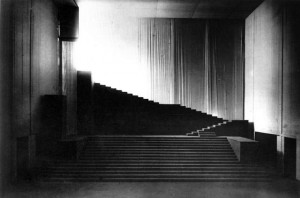
This I think is a photography of an Appia stage. Understanding Appias theories is helpful for understanding postmodern art, movies, film or theater.

Understanding Postmodern film or theater just means understanding contemporary or modern theater, film or movies. Postmodern means modern.

Another drawing of a stage of Appia. This will lead to important points in understanding modern art or postmodern movies and theatre.
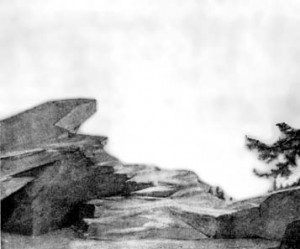
It is important that the actor can walk on the rocks to “say” something with his position in relation to the stage.

As I said, understanding this article will help to understand modern movies theater or film theories.
What do we take this for to undertand modern film theories. We see that in modern or postmodern cinema we have to consider everyhing that is on the screen or can be heard in a movie as creating “meaning”.
Appia said, when the music changes, the lighting shall change and so the stage can take on another expression. Today in movies we do not want to have everything move completely according to the music. Not the stage and not the actors. We tend to go away from the idea of melting all the things to one expression. But we shurely keep this melting idea in mind. But what we really go for is having a superiority towards all things that are in a movie or theatrical play. And we understand the viewer as having superiority to all the things that happen in a movie. And then we work with the “meanings” that we can create with the ideas we have seen in this chapter. The sound, the story and the words, the movement, and the image itself. In a theater the image is the stage that is lit in a certain way and the actor. And in a movie or film the stage and the actor and the lighting creating a movie image. But in both cases we understand both as creating some sort of “meaning”, something that we can work with as an artist.
So Wagners theories and Appias theories are 150 and 100 years old. And in modern movie theories these theories are still reflected. And they lead today to the idea of developing films or movies using strategies that derive from these theories. And the strategie today is to first be aware of the possibility to create meaning with all different aspects of a movie or a theatrical play. So today you must consider: Music, or of course sound rhythm or underlying sound bed rhythm to the movie or film, Story or the feeling the story brings word by word and guesture by guesture, Set or envirenment and the actors moving in it and lighting, which is in a theater switching on a maybe coloured light or in a movie it is switching on a light and pointing the camera on an instructed actor and create a movie image that has a “meaning”, just something happening, when you see it.
And so in postmodern movies you are to work with these things to move the audience in a positive way.
That is a major aspect of postmodern art or postmodern movies. To understand what it means to create “meaning”. Just something. Some emotion or reaction. And that all aspects of a movie or play can create meaning. Only to understand that, is already a big part of postmodern movie theories. Every little aspect of a film or theatrical play holds the possibilty to “move” the spectator somehow.
In some time later movie or theatrical science added one more aspect to the list that is an important part of the things that create meaning. And that is the material feel of objects. How does the spectator feel if he is close to the objects. How would the objects be felt if you would touch them, Soft and cosy, or like steel. The feel of objects is one more point for the list of thngs that can create meaning. That means that they can do something. And everything that can do something can be put to use in a movie or theatrical play.
So a big part of understanding Postmodern movies or theater is, to understand that it is aware of the single effects that the things have. And it is aware that a single effect can sometimes not be described in words, but still the effect does what the artist felt was right for this scene. And so postmodern art tries to aim at speaking in a bigger language then word-logic and then in the future even to also reconsider forms like for example being pleasant or being suspenseful and instead at the moment goes for experimenting in the possibility of “speaking” that all the things that can be seen in a movie have and which therefor must move the spectator in some way. Those effects are not to much part of the classical ideas of effects like pity or tension or classic heroism effects, but at the moment rather search for physical effects triggered by the sportive body of the character or physical/emotional effects triggered by light colour. In postmodern movies you see the idea to play around and work with the new ideas of creating meaning. And really everything that happens moves the spectator somehow, so in postmodern movies or theater everything can be used in a way that it clearly reveals that the artwork was made in the knowledge that everything creates meaning. Sometimes in modern movies or other art one of the usual values is dropped, like that you have no story or the story is very old or stupid. So that for example in a modern comic book movie the story is often stupid and this is done not only to get many people into the cinema. It is also a postmodern effect. Since the movie has to be made while you and the spectator are aware of this “all parts of the movie create meaning” effect, it is kind of good practice to let the story decline and enhance the effects of the colors, image and physical action. It is all good practice in regard to the named aspects of modern film or theatre theory.
So in modern or postmodern theater or film theories we understand that everything creates meaning. that is important to understand. The word “meaning” shifts from “something you can understand in words” to “something that moves you or changes you” That is why you say that a different light creates a different “meaning”. Because it is the wish to make clear that movies do not only explain things in words but rather change people and have effects on people in many different ways.
And as a bonus we might keep in mind the idea of proxemity. The meaning the actor creates in relation to the stage. And another thing we might want to catch here as additonal knowledge is this theory sentence of Richard Wagner: A play is always about the most important life change in the life of the main character.
And a hint to all people who actually are in the situation to stage a Wagnerian opera. Wagner specially emphasizes that the words have to be clearly understandible at all time. So as Richard Wagner personally states: a foreign accent, or a too musical approach to singing these lines he considers to be a big faux-pas to his work and Idea. Wagner says that if the words would not be clearly understandable and people would only use the great music and let the words be of minor worth and make them not clearly understandable that he would feel dishonoured in his work as a theater author. He says that it is ok if his words fail, but it would be not ok if you would in your staging not give the words a chance to be effective as words. So you should as a singer or director never give the words and the singing an “opera touch”. Wagner states, that he composed these operas using precisely the emotion that casually spoken german provides. And so he would very much like to insists on the words being sung clearly understandible and in ways of proper casual german pronounciation. Wagner explicitly states that everything else would in his eyes do injustice to the work. And If we see his theories we understand why. He tries to write a story that is then sung to achieve the best artistic result.
